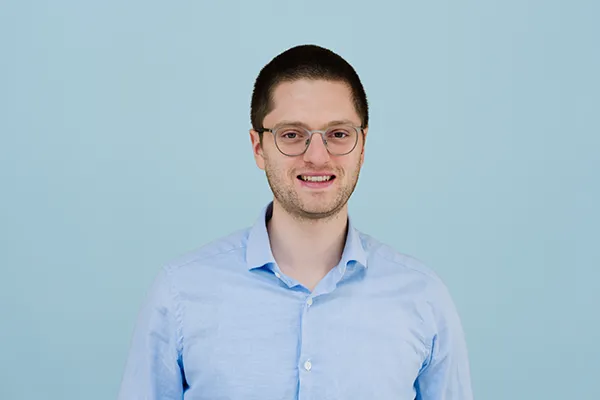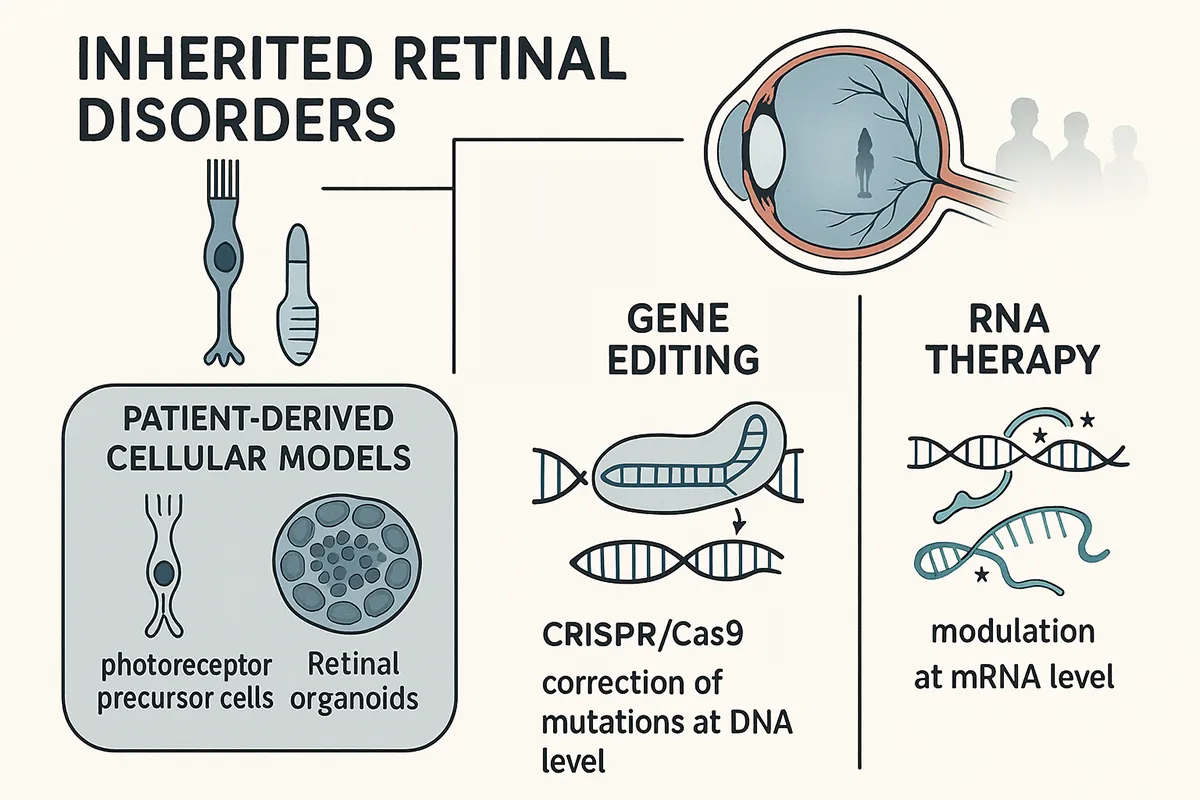CRISPR/Cas and RNA Therapeutics for Inherited Retinal Diseases
Pietro De Angeli — Hector Fellow Eberhart Zrenner
Vision loss from inherited retinal diseases is caused by faulty genes. My research uses cutting-edge tools—like CRISPR and RNA therapies—to fix or silence mutations in genes such as RHO, USH2A, and ABCA4. These treatments are tested in advanced patient-derived models, including iPSC-derived retinal cells, with the goal of developing safe, effective therapies ready for clinical translation.
Inherited retinal disorders are a diverse group of genetic conditions causing progressive vision loss. They result from pathogenic variants in genes crucial to retinal function and structure, with onset ranging from early childhood to adulthood. Despite advances in understanding these diseases, effective treatments are limited, underscoring the need for novel therapies like gene editing and RNA-based approaches.
Gene editing tools such as CRISPR/Cas9 offer a promising avenue to correct mutations at the DNA level, potentially providing lasting solutions. However, in the light of its permanent modification, the resulting gene modification has to be safe and result in the expected outcome. Conversely, RNA-based therapies provide a temporary effect by acting at the mRNA level by, for example, modulating faulty splicing or reducing the amount of mutant toxic transcripts.
My research focuses on developing clinically viable therapeutic strategies for the most commonly mutated genes in inherited retinal disorders: RHO, USH2A, and ABCA4. Specifically, we utilize both existing gene-editing tools and newly engineered ones to create safe and effective applications with high therapeutic potential. Additionally, we explore the use of small RNA molecules for transcript modulation both as therapeutic agents and as engineering tools. Our therapeutic approaches are validated in patient-derived cellular models, including iPSC-derived photoreceptor precursor cells and retinal organoids.

Pietro De Angeli
Eberhard Karls University TübingenSupervised by

Eberhart Zrenner
Medicine, Biology & Engineering

